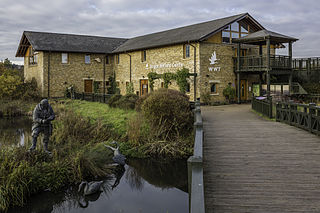
WWT London Wetland Centre is a wetland reserve managed by the Wildfowl and Wetlands Trust in the Barnes area of the London Borough of Richmond upon Thames, southwest London, England, by Barn Elms. The site is formed of four disused Victorian reservoirs tucked into a loop in the Thames.
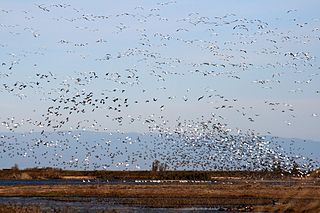
The Sacramento National Wildlife Refuge Complex is part of the United States system of National Wildlife Refuges (NWR). It is located in northern California, in the valley of the Sacramento River.

Grafham Water is an 806.3-hectare (1,992-acre) biological Site of Special Scientific Interest (SSSI) north of Perry, Huntingdonshire. It was designated an SSSI in 1986. It is a reservoir with a circumference of about 16 km (10 mi), is 21 m (69 ft) deep at maximum, and is the eighth largest reservoir in England by volume and the third largest by area at 6.27 km2. An area of 114 ha at the western end is a nature reserve managed by the Wildlife Trust for Bedfordshire, Cambridgeshire and Northamptonshire.

Chew Valley Lake is a big reservoir in the Chew Valley, Somerset, England, and the fifth-largest artificial lake in the United Kingdom, with an area of 1,200 acres (4.9 km²). The lake, created in the early 1950s and opened by Queen Elizabeth II in 1956, provides much of the drinking water for the city of Bristol and surrounding area, taking its supply from the Mendip Hills. Some of the water from the lake is used to maintain the flow in the River Chew.
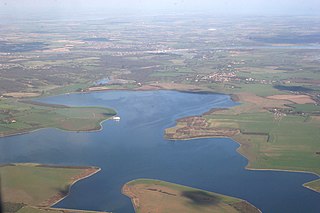
Abberton Reservoir is a freshwater storage reservoir in eastern England near the Essex coast. It is the largest freshwater body in the county and the fourth largest reservoir in England, with an area of 700 hectares (1,700 acres). It is a pumped storage reservoir, with water pumped into it from the River Stour. It lies 6 km (3.7 mi) south-west of Colchester near the village of Layer de la Haye. It is owned and managed by Essex and Suffolk Water, part of Northumbrian Water Group. Plans to increase the capacity of Abberton reservoir to 41,000 megalitres (9.0×109 imp gal) by raising its bank height were completed in 2013.
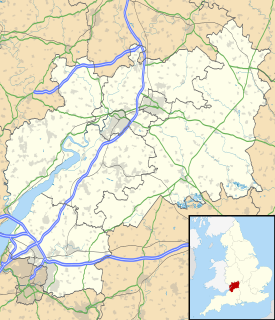
The Cotswold Water Park is the United Kingdom's largest marl lake system, straddling the Wiltshire–Gloucestershire border, northwest of Cricklade and south of Cirencester. The lakes were created in the second half of the 20th century by extraction of glacial Jurassic limestone gravel, which had eroded from the Cotswold Hills, and these filled naturally after working began to cease in the early 1970s.

Pitsford Water or Pitsford Reservoir is a 413 hectare reservoir and biological Site of Special Scientific Interest east of Brixworth in Northamptonshire. It is owned by Anglian Water, which manages it as a water park for walking, cycling, fishing, sailing and birdwatching. An area of 181 hectares north of the causeway which divides the reservoir is the Pitsford Water Nature Reserve, which is managed by the Wildlife Trust for Bedfordshire, Cambridgeshire and Northamptonshire.

The Brent Reservoir is a reservoir in North West London. It straddles the boundary between the boroughs of Brent and Barnet and is owned by the Canal & River Trust. The reservoir takes its informal name from a public house called The Welsh Harp, which stood nearby until the early 1970s. It is a 68.6-hectare (170-acre) biological Site of Special Scientific Interest (SSSI), the only SSSI in either Borough and among more than 30 SSSIs in Greater London.
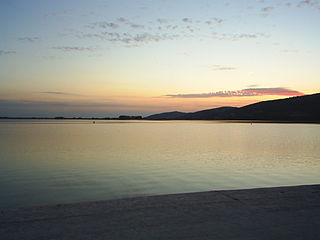
Cheddar Reservoir is an artificial reservoir in Somerset, England, operated by Bristol Water. Dating from the 1930s it has a capacity of 1350 million gallons (6,140,000 cubic metres). The reservoir is supplied with water taken from the Cheddar Yeo river in Cheddar Gorge. The inlet grate for the 54 inches (1.4 m) water pipe that is used to transport the water can be seen immediately upstream from the sensory garden in Cheddar Gorge. It lies to the west of the village of Cheddar and south east of the town of Axbridge. Because of this it is sometimes known as Axbridge Reservoir. It is roughly circular in shape, and surrounded by large earth banks which are grazed by sheep.

Weir Wood Reservoir is a 153.5-hectare (379-acre) biological Site of Special Scientific Interest west of Forest Row in East Sussex. It is in High Weald Area of Outstanding Natural Beauty and an area of 32.6 hectares is a Local Nature Reserve which is owned by Southern Water and managed by East Sussex County Council and Southern Water.

The William Girling Reservoir is located in the London Borough of Enfield and is part of the Lee Valley Reservoir Chain that supplies London with drinking water. It is named after William Girling OBE, a chairman of the Metropolitan Water Board (MWB). The reservoir and the nearby King George V Reservoir are known collectively as the Chingford Reservoirs. The storage reservoir, which is owned by Thames Water, is bordered by Chingford to the east and Ponders End and Edmonton to the west, and covers 334 acres with a perimeter of 3.5 miles (5.6 km). There is no public access.

The King George V Reservoir, also known as King George's Reservoir, is located in the London Borough of Enfield and is part of the Lee Valley Reservoir Chain that supplies London with drinking water. The storage reservoir is bordered by Sewardstone and Chingford to the east and Brimsdown and Ponders End to the west, and covers 420 acres, making it the largest in London. The reservoir and the nearby William Girling Reservoir are known collectively as the Chingford Reservoirs, and are owned and managed by Thames Water.

Sevenoaks Gravel Pits is a 73.7-hectare (182-acre) biological Site of Special Scientific Interest on the northern outskirts of Sevenoaks in Kent. It is managed by Kent Wildlife Trust as the Sevenoaks Wildlife Reserve and Jeffery Harrison Visitor Centre.

Llandegfedd Reservoir is a large 174 hectare water supply reservoir and is eight miles (13 km) north of Newport in south Wales. The reservoir is very close to Pontypool, Cwmbran and Usk, with the boundary between Monmouthshire and Torfaen running through it along the former Sôr Brook.
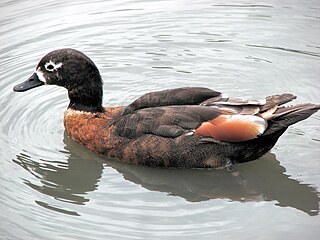
The Western District Lakes of Victoria, in the Western District of Victoria, south-eastern Australia, were recognised on 15 December 1982 as wetlands of international importance by listing under the Ramsar Convention, as Ramsar site no.268.

Tring Reservoirs is a group of four reservoirs close to Tring on the border of Hertfordshire and Buckinghamshire, England. Their purpose is to feed the Grand Union Canal.

Lonsdale Road Reservoir is a disused reservoir in Barnes in the London Borough of Richmond upon Thames. It is an 8.2 hectare local nature reserve and Site of Borough Importance for Nature Conservation, Grade 1, owned and managed by Richmond upon Thames London Borough Council.
Dillington Carr is a 55-hectare (140-acre) biological Site of Special Scientific Interest north of Dereham in Norfolk.

Sheepwalk Lake is a 9-hectare (22-acre) nature reserve west of Shepperton in Surrey. It is managed by the Surrey Wildlife Trust.

Burton Park SSSI is a 57.7-hectare (143-acre) biological Site of Special Scientific Interest west of Pulborough in West Sussex. A larger area of 63 hectares, including Chingford Pond to the west, is designated a Local Nature Reserve called Burton and Chingford Ponds, which is managed by the Sussex Wildlife Trust and West Sussex County Council. The site is adjacent to Burton Park, a Grade I listed building.




















